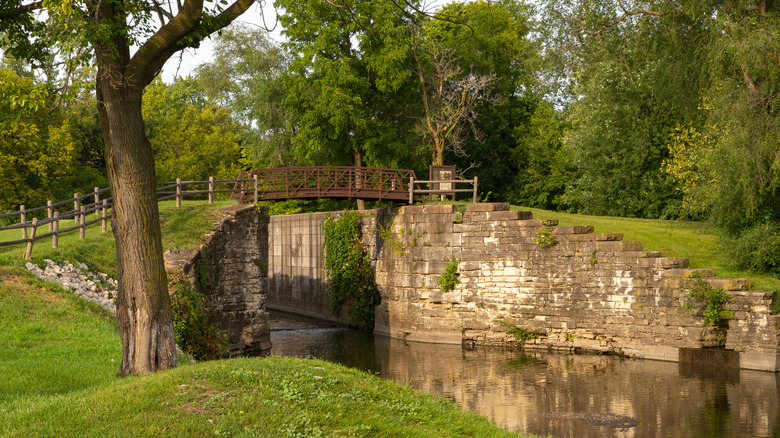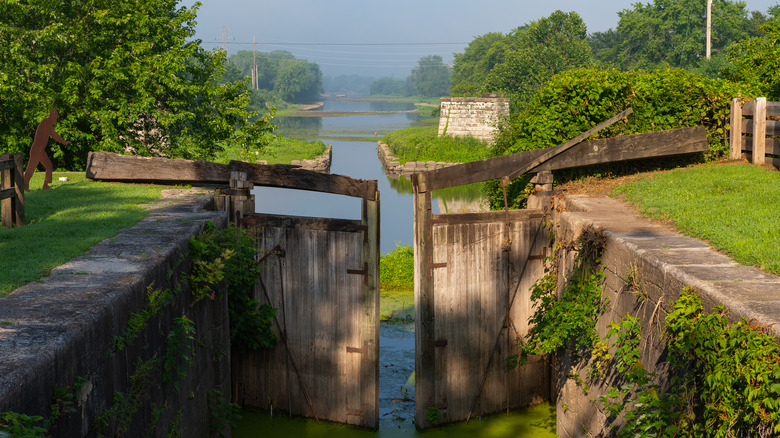America's First National Heritage Area Has Old-School Boat Tours On The Waterway Between Michigan And Illinois
Across the United States, there are 62 National Heritage Areas, lived-in landscapes deemed historically and culturally important and therefore worthy of conservation and government protection. The list contains a diverse cohort, including the MotorCities National Heritage Area in southeastern Michigan and the Santa Cruz Valley of California with its lovely Victorian-era wine towns like Los Gatos. But the first area to get such a designation was the Illinois and Michigan Canal, which helped adventurers sail through America's five Great Lakes to the Illinois and Mississippi rivers.
The French-Canadian explorer Louis Jolliet, supposedly the first European to traverse the Mississippi from Wisconsin to Arkansas, wrote about the potential benefits of a canal system in this part of the Midwest as far back as 1674. The Native American tribes who roamed the area had envisioned it perhaps centuries earlier. And true to their predictions, when the 96-mile canal was finally built in the mid-19th century, it ushered in sweeping changes. Chicago became one of the country's most important and populous cities, while northern Illinois became a hub of agriculture and industry.
The canal was also a final connective thread in a waterway network that webbed the East, South, and Midwest, meaning travelers could now travel from New York to New Orleans, via Chicago, without ever setting foot on dry land. The canal remained busy until the turn of the 20th century, when powerful locomotives offered speedy overland alternatives and a new Chicago ship waterway began to render the canal obsolete. But while its heyday is well in the rearview mirror, the Illinois and Michigan Canal remains one of America's most storied transport networks.
The Illinois and Michigan Canal waterways
There are plenty of bucket list-worthy boating adventures in America, but in terms of pure bucolic charm, traversing the Illinois and Michigan Canal must be one of the finest. If you want to experience what 19th-century travel was like on the canal, book a tour on "The Volunteer," a replica 1840 canal boat that runs (or walks, perhaps) on mule power.
Strange as it may seem, a mule tied to the front of the boat would walk along the adjacent footpath and literally drag the boat through the water. The 60- to-90-minute tour of the waterway includes stories from yesteryear delivered by guides in period attire and offers pretty views from the boat's top deck. Note that tours run from late May through September only.
You can learn more about the Illinois and Michigan Canal and its status as a National Heritage Area at the visitor center at Lock 16, the same place from which the boat tour departs. The history of the canal is explored through exhibits, covered in lovely olden-time maps, and books focusing on niche areas of interest, like the industrial history of LaSalle County. You can also buy boat tour tickets and rent bikes, peruse the shelves of the quirky little gift shop, have lunch in the Lock 16 Cafe, or stamp your National Park Passport here.

